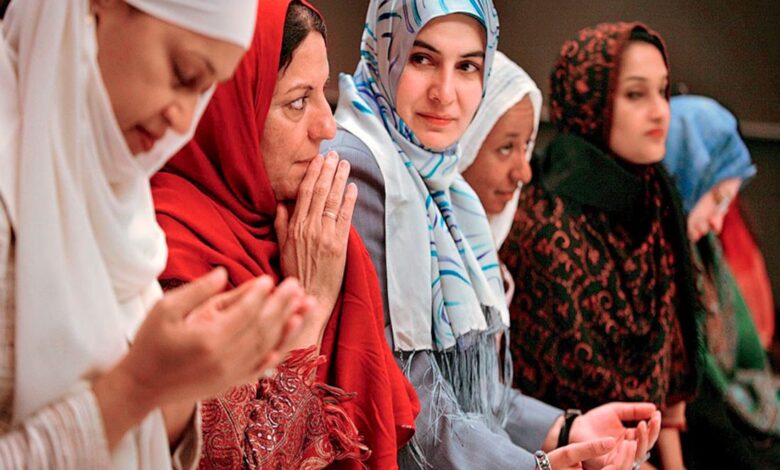A Brief History of Religious Attires and Head Coverings
Religious Attires and Head Coverings

Religion is as old as humans on this earth. It’s something that is normally a private matter in some cases, but in many countries, it’s a societal matter. And this way, all the aspects of humans that religion talks about are not necessarily private. Attires play a vital role in the social status of the people in all Muslim countries. Most of the time, people with more religious status wear more Islamic dresses and vice versa. But, it depends on the area one lives in and the bringing up of someone that create norms for them. This article can help you to explore the prominent religious attires and accessories in the world. You can read about religious attires and head-coverings in this article. It can genuinely help you understand the living styles of different religions. As you can read about other religions as well.
Table of Contents
1: Religious Attires and Headcoverings in Abrahamic Religions:
Abrahamic religions, or as we know them, Islam, Christianity and Judaism have their versatile styles of attires. There is a wide and versatile range of attires in all of these religions, and the same is with attires. One thing that was common in all of these was the modesty that these religions possess. There is always a type of more covering in these religions. This means that people who follow these religions used to wear and still wear more covering attires.
2: In Islam:
Some of the traditional religious Muslim female attires options are:
- Hijabs
- Khimar
- Abaya
- Chador
- Jilbab
- Niqab
- Burka
- Shalwar kameez
For men, the traditions change from area to area and country to country as well, like:
- Thobe in Arab countries
- Shalwar kameez in Afghanistan, Pakistan, India and Bangladesh
- Bisht
For Women:
The history of women covering themselves in a proper Islamic way is as old as 627 C.E. Experts say that proper Islamic dress codes were implemented on the Prophet’ (S.A.W.W) wives. And the Quran implemented proper covering dress codes after some years of the advent of Islam. Allah S.W.T ordered Muslim women to cover themselves in public and before the people they don’t know. To be precise, it was an obligation for these women and still is to cover themselves before Non-mahram men. There is a complete dress specification they can use in front of some of the Mehram men as well. Mehrams includes nephews, brothers, father, and husband. As it should be, there is no obligation over women to follow the dress code in private time with spouse. Since then, Muslim women have been wearing different types of coverings. There are ethnic and other impacts on different types of wearing according to the areas they live in. And so, women have different types of coverings within Muslim populations.
For men:
It’s obligatory for men to cover a specific part of their body according to Islamic traditions. However, there are three things men should always take care of for their proper dress code.
- Men cannot wear clothes that show their body parts from navel to knees.
- They cannot wear clothes that resemble the ones women wear.
- In their intimate times with their spouse, they can stay as they like.
Head covering in Islam:
For women, it’s obligatory to cover their head in public, but many men like to wear head covers too. A Muslim man may wear a prayer cap in formal and informal conditions. There are different types of caps for prayer that may include a kufi or a Nawabi hat. In different areas of the world, this tradition comes from Prophet as He used to cover his head. In Arab countries, men wear Arabic headscarves that vary in colour from region to region.
3: In Christianity:
Bible, which is a religious book for Christians, has several verses about covering the head. One of them even says that if a woman does not cover her head, her head should be shaved. The same verse states that a woman should cover her head, so there is no need to do this. Many verses show there were traditions of covering heads in both men and women. Religious men and women in Christianity still wear caps and scarves. There have been attires like Vestments that have religious traditions. And Christians followed them, especially Eastern Orthodox, Catholics and Methodists. The history of this tradition is religious and other types of attires like Pallium and Vespers that Roman Catholics wear. The history of these attires is basically the traditions of different sects of Christianity. Some of the Christian traditions encourage wearing cassock as well. For women, it’s an old tradition that most of them do not follow anymore. It was a tradition of the early church. Give your beloved gift islam you can have it from here.
Judaism:
In Judaism, men wore Tunics and there is a Muslim history influence on different Jewish wearing. The experts say that a Muslim ruler decreed on the Jews to wear oversized hats and dark blue garb. This is something that still runs in many Jewish traditions. Some experts say that in Yemen, too, Jewish people were allowed to wear only blue colour. One of the religious attires and head coverings in Jews is a tallit. According to the Bible, God told Jews to cover their heads, and since then, they wear this traditional religious head covering. Some of the religious attires in Judaism come from Egyptian and Syrian backgrounds.
Conclusion:
Head coverings and attires show modesty and association to almost all religions. The Abrahamic religions are the most followed ones. All of these religious attires and head coverings do have traditional impacts. But, there are religious backgrounds as well that make it respectable for all the three Abrahamic religions. People from all areas of the world following Abrahamic religions wore these attires and still do. It is not just a fashion for them; it makes them better Muslims, Christians, and Jews. This is something that is a kind of obligation for all of these peoples—making them distinct and showing the identities that they get from long histories of centuries.




